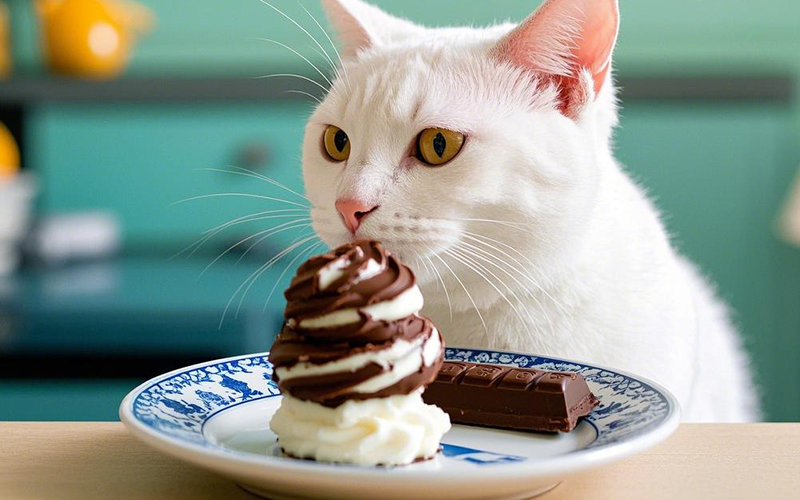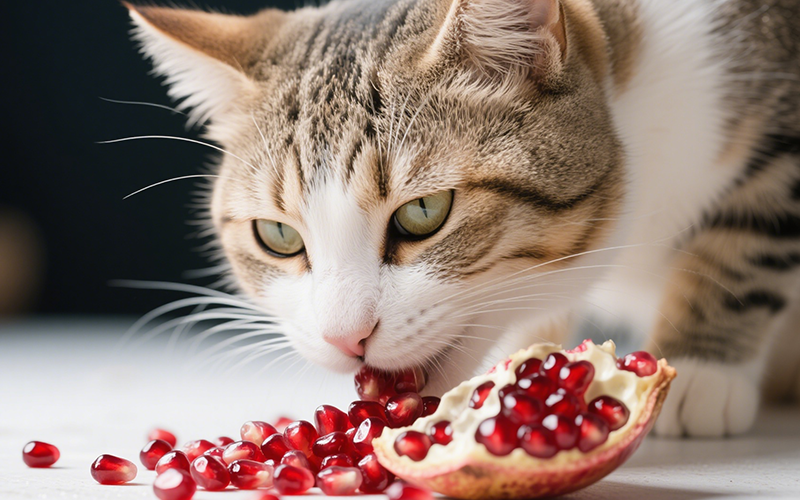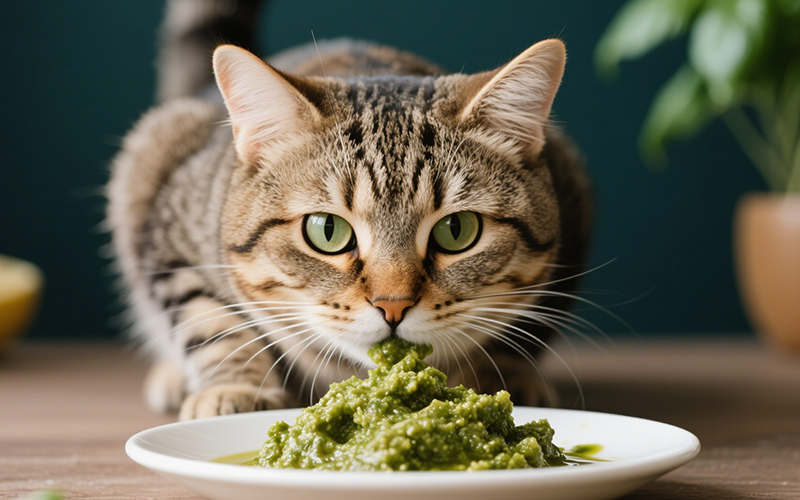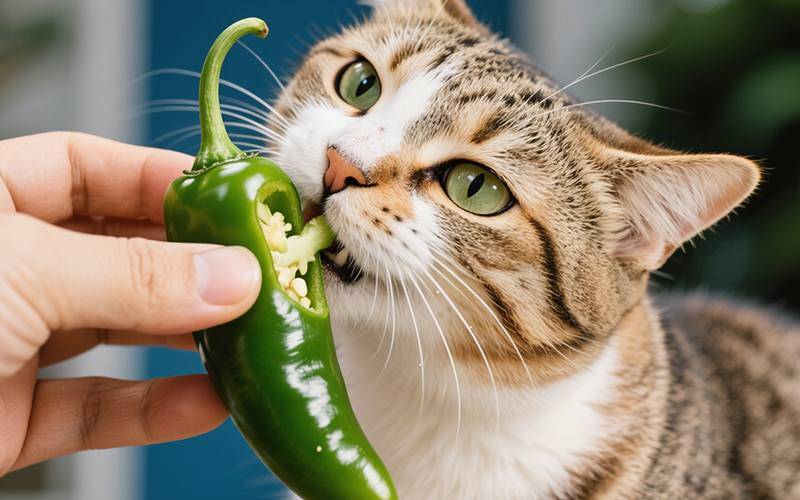Can Cats Eat Chocolate Ice Cream? Understanding the Risks of Sharing This Sweet Treat with Your Feline
- 12 Mar 2025 13:50
As a pet owner, it’s natural to want to share your favorite treats with your cat, but some human foods can be harmful to them. One such treat is chocolate ice cream. While it might be tempting to give your cat a small taste of this sweet, cold treat, chocolate ice cream is not safe for cats. Here's why you should avoid sharing it with your feline friend.

Why Chocolate Ice Cream Is Dangerous for Cats 🚫
1. Chocolate Is Toxic to Cats 🍫
Chocolate contains a substance called theobromine, which is highly toxic to cats (and dogs). Even small amounts of chocolate can cause serious health issues. Theobromine affects the central nervous system and can lead to symptoms such as:
Vomiting
Diarrhea
Rapid heart rate
Tremors
Seizures
The darker the chocolate, the higher the levels of theobromine, so even a small amount of chocolate ice cream could be dangerous to your cat. While chocolate ice cream may have less chocolate than pure chocolate, it’s still not safe.
2. Sugar and Dairy Are Hard for Cats to Digest 🧁
Most ice cream, including chocolate ice cream, contains high levels of sugar and dairy. While sugar isn’t toxic to cats, it can contribute to obesity and other health issues if consumed in large amounts. Cats don’t need sugary foods in their diet, and giving them too much sugar can lead to weight gain, diabetes, and other complications.
Furthermore, most cats are lactose intolerant, meaning they have trouble digesting dairy products. Eating ice cream, which is high in lactose, can lead to stomach upset, including symptoms like vomiting, diarrhea, or bloating.
3. Unnecessary Ingredients and Additives 🧃
Chocolate ice cream typically contains a variety of other ingredients, such as artificial flavorings, preservatives, and stabilizers, which are not suitable for cats. These ingredients are not only unnecessary for your cat’s health but can also contribute to digestive discomfort or even toxic reactions in some cases.
What Happens If Your Cat Eats Chocolate Ice Cream? 🚨
If your cat consumes chocolate ice cream, it's important to act quickly, especially if the ice cream contains a significant amount of chocolate. The symptoms of chocolate toxicity can vary depending on the size of the cat and the amount of chocolate consumed, but they may include:
Restlessness or hyperactivity
Vomiting and diarrhea
Tremors or muscle twitching
Rapid breathing or heart rate
Seizures
If your cat shows any of these signs, you should contact your vet immediately. In severe cases, chocolate toxicity can lead to coma or even death.
Healthier Treat Alternatives for Your Cat 🍗
If you want to treat your cat, there are plenty of safe and healthy alternatives that are much better than chocolate ice cream. Here are some ideas:
1. Frozen Tuna or Chicken Cubes 🐟
You can freeze small pieces of tuna or chicken to create a cool, protein-packed treat for your cat. Cats love fish and meat, and freezing these options provides a refreshing and safe alternative to ice cream.
2. Cat-Specific Ice Cream 🍦
Some pet stores offer cat-safe ice creams, often made from lactose-free dairy and designed to be easier on your cat’s stomach. These treats are specifically formulated for feline consumption and are a safer alternative if you want to cool your cat down on a hot day.
3. Canned Pumpkin 🎃
Plain canned pumpkin (without any added sugar or spices) is a healthy and tasty treat for cats. It’s packed with fiber and can be beneficial for your cat’s digestion. You can chill it to make it more refreshing, especially during warm weather.
4. Frozen Catnip or Cat Grass 🌿
For a fun and cool treat, you can freeze catnip or cat grass into ice cubes and offer them to your cat. These natural treats are safe and enjoyable for your cat, providing a bit of mental stimulation and relaxation.
5. Cooked Eggs 🍳
A small portion of scrambled eggs (without any seasoning) is a protein-rich treat your cat will love. You can even chill it to create a cool snack for your feline companion.
What to Do If Your Cat Eats Chocolate Ice Cream by Accident 😿
If your cat accidentally eats chocolate ice cream, try to determine how much chocolate was consumed. If the chocolate content is low and your cat seems fine, there may be no immediate cause for concern, but it’s still important to watch for signs of chocolate toxicity. If your cat ingests a significant amount of chocolate or shows symptoms like vomiting, diarrhea, or agitation, contact your vet immediately. The sooner you act, the better the chances of a positive outcome.
Tips for Treating Your Cat Safely 🐾
When offering treats to your cat, it’s important to keep the following guidelines in mind:
Moderation: Treats should only make up a small portion of your cat’s diet. They should not replace a balanced, nutritionally complete cat food.
Avoid Toxic Foods: Some foods are toxic to cats, including chocolate, onions, garlic, grapes, and raisins. Always be cautious about what you offer your cat.
Watch for Allergies or Sensitivities: Every cat is different. Monitor your cat after introducing new foods to make sure they don’t experience any digestive upset or allergic reactions.
Consult Your Vet: If you’re unsure whether a particular treat is safe for your cat, it’s always a good idea to consult your vet.
PettureX: Your Pet Health Assistant 🐾
If you ever have questions about what foods are safe for your cat or need advice on their diet, consider using PettureX. This AI-powered pet health assistant is available 24/7 to answer your questions and provide guidance to help keep your cat healthy and happy.
Conclusion
Can cats eat chocolate ice cream? No, chocolate ice cream is dangerous for cats due to the toxic effects of chocolate, along with the high sugar and dairy content. Sharing chocolate ice cream with your cat can cause serious health problems, including chocolate poisoning and digestive upset. Instead, treat your cat to safer, healthier alternatives like frozen tuna cubes, cat-safe ice cream, or cooked meat.
If you’re ever uncertain about what foods are safe for your cat, PettureX is here to help you make informed decisions and ensure your feline friend stays safe and healthy. 🐱💙
Related

Pomegranate Peril: Can Cats Eat the Seeds Safely? A Vet-Reviewed Guide
- 25 Apr 2025
Prickly Problem: Can Cats Eat Pineapple Leaves Safely? A Vet-Reviewed Risk Analysis
- 25 Apr 2025
The Prickly Truth: Can Cats Eat Pine Needles Safely? A Guide for Concerned Owners
- 24 Apr 2025
Pesto & Paws: A Dangerous Mix? Can Cats Eat Pesto Safely?
- 24 Apr 2025
Persimmons and Paws: Can Cats Safely Eat This Autumn Fruit? A Vet-Reviewed Guide
- 23 Apr 2025
Nutritional Yeast for Cats: Savory Sprinkle or Health Hazard? A Vet-Reviewed Guide
- 23 Apr 2025
Marshmallows and Cats: A Puffy Problem? Why Vets Say No to This Sugary Snack
- 22 Apr 2025
Kefir for Kitties? A Veterinarian-Reviewed Guide to Safety, Benefits & Risks
- 22 Apr 2025
The Burning Question: Can Cats Eat Jalapenos? A Comprehensive Safety Guide
- 21 Apr 2025
Cool Temptation: Can Cats Eat Ice Cream Safely? The Vet-Backed Truth
- 21 Apr 2025
